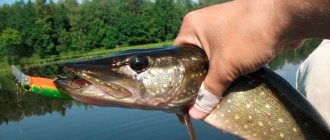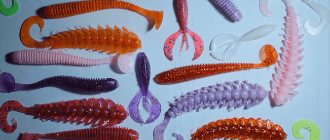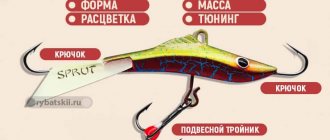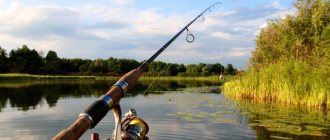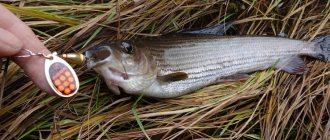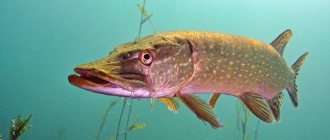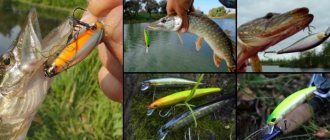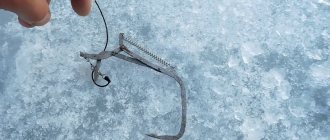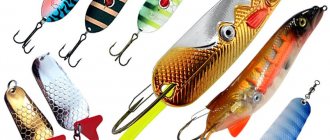Experienced fans of hunting for toothy fish know that a frog for pike is one of the most effective baits, especially in those reservoirs where the population of these amphibians successfully reproduces and remains in large numbers for many years. With the spring warming of the water, not only the predator itself becomes active, but also its potential prey presented above, which the angler can catch in abundance right on the reservoir, without spending money on buying and storing bait.
Based on the principle of a live bait, manufacturers have managed to make catchy imitations in the form of silicone frogs, made according to the non-hooking principle, with a hook hidden in the body. Such artificial baits for the spinning angler are a godsend and a help when fishing in thickets of aquatic vegetation in the summer, when pike conduct ambush hunting, staying in permanent places. The nuances of fishing for amphibians and their artificial copies will be discussed in our conversation today.
Fishing with a live frog
Catching large pike with a frog is done in a variety of ways, including both bottom fishing and active spinning fishing. Stationary girders and floating circles in water bodies densely overgrown with algae become indispensable hunting tools. In clean water areas, they successfully use a stand with frogs using a classic donkey, equipped with an elastic band for easy installation of the tackle. The same kind of places can be effectively fished using a spinning rod or powerful feeder tackle as a bottom rod.
With a certain method of mounting this bait, spinners catch pike by casting a spinning rod with wiring. Special conditions on reservoirs, where promising places are only small openings and windows in dense vegetation, it is rational to catch pike with a frog bait using float tackle. As can be seen from the listed conditions, there are plenty of opportunities for using bait, the main thing is that the predator is familiar with the bait and it is included in its diet.
Catching catfish on a donk from the shore + video
Hello dear readers of my blog, it’s the second half of summer and it’s time to go fishing for large catfish. Living in the small town of Balashov on the banks of the Khoper River, I more than once managed to catch catfish, of course not the giants that are caught on the Volga or Don, but still of decent size.
As you probably already understood, today we will talk about catching catfish on a donk from the shore, so to speak, in the old-fashioned way. You can read about catching catfish in the spring with a donk here.
When choosing a place to catch catfish on a donk, the angler needs to decide on the expected size of his future trophy. You can successfully catch small salmon in small canals of irrigation systems and floodplains.
Individuals weighing about a kilogram are usually found here. No special conditions are required for commercial fishing in such canals. Often small catfish are caught by accident when catching large crucian carp in a canal using several dung worms.
In small channels it is convenient to fish from the shore using a donka with a rubber shock absorber.
Specimens of medium and large sizes should be looked for in deep holes and routs of large rivers with medium flow speeds. Trophy catfish are caught in large deep reservoirs. It is especially abundant near concrete dams and dams of large rivers. Large catfish live among snags and stones, sometimes completely burying themselves in the bottom silt.
When visiting a reservoir for the first time, you should pay attention to local fishermen who perfectly know the topography and structure of the bottom. A local fisherman with a primitive wooden reel and rough construction line often becomes the owner of the largest trophies, unlike his visiting brothers. In addition, read the article about catching trophy catfish with a quok.
In the central and southern regions of Russia, you can catch large catfish from July to September, during the period when the water warms up well. In October, the catfish bite stops completely.
Catfish hunt mostly at the exit from their hole, sometimes swimming into warm, shallow reaches. It is best to catch catfish on a donk from the shore in the evening and at night. The peak of the bite of large catfish occurs from ten o'clock in the evening to five o'clock in the morning the next day. Small catfish can peck throughout the entire day, becoming more active in the evening and at night.
Tackle for catching catfish on a donk requires very strong ones. You can equip the donk with a regular reel (cast), since casts when catching large catfish are quite rare. If the river bank at the intended fishing location is overgrown with grass or covered with large stones, you should take a small piece of tarpaulin with you when fishing. The line laid on the tarpaulin will not cling during the next cast.
When fishing with a bottom rod equipped with a spinning rod, its cast should be semi-heavy or heavy, and the action should preferably be slow. It should be taken into account that sometimes, especially on budget versions of fishing rods, the specified test and action do not correspond to real capabilities.
A medium-sized catfish breaks Chinese consumer goods like a child's reed fishing rod. The situation is similar with coils. A cheap version of a spinning reel will last until the first bite of a large fish.
The most popular among fans of catching catfish on a donk from the shore is the good old inertial reel of the “Nevskaya” type, which is unpretentious and has enviable durability. You need to wind at least 100m of fishing line onto the reel.
It is preferable to choose a braided line 0.5–0.7 mm in diameter. It should be noted that the wicker is often damaged by sharp stones and large shells at the bottom.
It is better to take a sliding sinker; the weight is selected depending on the flow speed (but not less than 50g). When forming a loop for the leash, the knot is strengthened with a small blind sinker. It is better to have one leash, since the hooks often break when fishing, and the snags at the bottom of the reservoir are strong. The optimal leash length is about a meter. The hook used is large (black nickel), numbers from 8 to 12, with a long shank.
When using large nozzles, a double is usually used. Many anglers prefer to use a tee when catching especially large catfish or when the shelled contents of pearl barley are used as bait. Any bell or bell is suitable as a sound signaling device. There is also such a method of fishing as peret, you can read about such an interesting method of fishing here.
The choice of baits for catching this fish is quite wide. Small catfish are well caught on a bunch of moving large dung worms, grabak or cockchafer larva. When fishing with a worm, it is necessary to frequently check the bait, since the worms from the hook are easily eaten by perch and rudd.
To catch large specimens, they use a grasshopper, a mole cricket (cabbage mole cricket), and a small frog. The frog is impaled on the hind leg, the grasshopper and mole cricket are attached to the abdomen. The frog should be baited when fishing in the shallows near reed thickets. The ideal bait option is a small molting crayfish. Instead of cancer, you can use a cancer cervix.
Many fishermen, before throwing the bait, lightly burn it with a lighter or matches.
It is very good when catching catfish on a donk from the shore to use a sparrow fried over a fire or chicken liver (you can use any bird giblets or half a chicken head).
It is better to keep chicken giblets in the open sun before planting. In the Kuban, small somenka is successfully caught using a green (rice) worm, which is caught in the soil of rice paddies.
Place several green worms on a large single hook.
Separately among the baits it is worth noting live bait. As live bait you can use small crucian carp, pike fry, small perch, tench, rudd, sabrefish, and bershik. It is preferable to fish for small crucian carp, since crucian carp live longer when hooked.
However, live bait has one serious drawback. When casting a tackle, live bait often flies off even from the double and the fisherman happily awaits a bite with an empty hook.
For better fixation of small fish, the end of a removable leash is threaded through the gills, and the sting of the hook is hidden in the dorsal fin.
The bite of a catfish of any size is sharp and strong, sometimes tearing the rod off the poke or tearing the reel out of the ground. It is better to tie the reel of the reel around a tree or press it with a large stone. You need to fish out the catfish carefully, not allowing it to wrap the fishing line around the snags.
We must not forget that he has practically no pain receptors in his mouth. Therefore, this fish breaks out intensively. It is difficult to dampen catfish jerks, especially near the shore, and requires some experience.
When fishing with a hook, you need to wear a glove or mitten on one hand so as not to cut your skin with the fishing line when landing the fish. Catfish gatherings are quite frequent.
Any angler who has caught catfish on a donk at least once is guaranteed to remember this fishing for the rest of his life.
Well, as always, the video “Catching catfish with a donk”:
Best regards, Sergey Fedulov!
Source: https://angling-fish.ru/som/lovlya-soma-na-donku-s-berega.html
When and where to catch a frog
As soon as the reservoir warms up to a temperature above 8–10 degrees, amphibians begin to actively emerge from hibernation and immediately become included in the list of victims of the toothy predator. Consequently, you can catch a pike with a frog from mid-spring to late autumn, when tree frogs, huddled in dense groups, fall into prolonged suspended animation. Fishing with this type of bait is carried out in the immediate habitats of amphibians. They live and feed in stagnant or weakly flowing reservoirs, staying in shallow areas with a high degree of overgrowth.
As a rule, these are coastal zones with depths of up to two meters near the walls of reed or cattail vegetation, as well as shallows with lotus, egg capsule or water lily, forming in their colonies clean, small spaces of water in the form of windows and gaps. Based on these factors, the fisherman should select promising places for fishing, placing rigs on the borders of algae and clean water areas, as well as in the gaps between floating plants.
Where and how long can you store a frog?
Unfortunately, it will not be possible to store these amphibians for a long time, since after being in an unnatural habitat, they lose mobility, which will undoubtedly affect their attractiveness. Moreover, they can lose their natural color, which will also have a negative impact on fishing results.
If you plan to keep them at home for some time, then you need to be prepared to feed them every 2 hours with all kinds of insects, because they have a very good appetite.
They can be stored for a short time in a large plastic bucket, first filling it with 15-20cm of water to make them feel more comfortable.
How to catch frogs
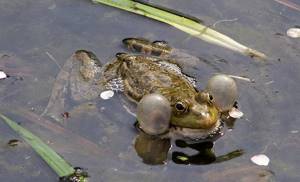
To catch bait, the fisherman must provide a net equipped with a long handle, preferably telescopic or collapsible, up to three meters. A rectangular or square landing net is most convenient, since you will have to catch amphibians by pressing the arm of the device to the bottom. The perimeter of 1x0.7 meters is one of the rational and convenient sizes. A mesh fabric is used with a mesh size of no more than 1.5-2 cm. Through a smaller perimeter, the frogs freely go free. It is preferable to use a mesh fabric woven from transparent monofilament. This material is less frightening to captured tree frogs and is lighter in weight of the fabric base. They catch frogs in the coastal shallows, looking for water bushes and stretching a net over them. The baits fall into the device along with the vegetation. Individuals of large sizes are selected, starting from 7 cm in the body and more.
Important! It is worth distinguishing between frogs and toads, which have a darker color and their body is covered with clearly visible tubercles. Such specimens of amphibians are completely unsuitable for pike fishing.
Green or green with brown spotted frogs with clean and smooth skin are selected. After catching, the bait is placed in a twenty-liter bucket without water, covering only the bottom with fresh grass and placing an impromptu cage in the shade. If the angler does not have a net, then the bait can be caught by having a piece of fabric available, or you can use outerwear, a T-shirt, a shirt or a jacket for this purpose, simulating a cape from it. Exploring the shore at the border of the transition to water, you can notice that frogs like to bask in the sun, crawling out onto a dry area. It is here that they are covered with a cape, subsequently picked up by hand and placed for storage in the above-described cage. This method is more labor-intensive and time-consuming, so when planning to catch a predator on an amphibian, it is worth acquiring the net described above in advance.
Description and characteristics of an artificial frog as fish bait
An artificial bait frog is an exact copy of a living specimen. It has the same size, that is, its length is 8 cm. Pike especially love this kind of bait.
The rubber reptile lies on its back on the water; this effect is achieved through proper loading.
Additional protection for the rubber amphibian is a hook on the belly, to which a loop-shaped reflector-spring is attached, which protects the bait from accidentally catching on the grass. Thanks to such thoughtful equipment, this bait can be safely used on water from which the thickest thickets of grass literally stick out.
Another significant advantage of rubber frogs is their light weight, which makes it possible to throw them at absolutely any distance, even the longest distances.
Material of manufacture
The high effectiveness of using artificial frogs is achieved not only due to their believable size and light weight, but also due to the variety of these baits presented today on the shelves of specialized stores.
Nowadays, it is easy to find rubber, plastic, silicone wahs, each of which has its own characteristics and its own special fishing purpose, and what they are will be discussed further.
- Made of rubber . Rubber frogs occupy a special place among other artificial baits. Their distinctive feature is that, thanks to the unique properties of rubber and its additional silicone coating, such a “trick” will serve its owner for a long period of time.
- Made of plastic .
Affordable plastic frogs are also available on the fishing market, which come in completely different sizes, both simulating small amphibians and their grown-up individuals. Thanks to the bright coloring, which was additionally awarded to them by their manufacturers, a predator simply cannot leave them unnoticed. No matter what area you plan to fish in, among thick algae or in an absolutely clean reservoir, such a frog will cope with its role flawlessly. Plastic frogs - Made from silicone . Silicone frogs also take their place of honor among the artificial baits under consideration. Such “lures” attract the attention of inhabitants of underwater worlds not only with their appearance, but also with an attractive and believable game of movements; in addition, many of them are scented with specific odors, which, according to the inventors, should also attract predators.
- Made of plastic . These hollow green baits are somewhat reminiscent of plastic children's toys, but unlike them, these are additionally equipped with silicone legs, thanks to which their play attracts many predators. Such frogs, however, attract the predator’s attention not only with their movements, but also with the intriguing sounds that are made when the bait moves.
Principle of operation
When caught by a fish, the bait shrinks and the hooks become exposed.
Any fisherman, both amateur and professional, should become familiar with the operating principle of the “artificial frog” bait, since this fishing tool can be used throughout the entire season, from spring to late autumn.
When using the bait in question while fishing, it not only attracts additional attention from the fish, but also increases the chances of catching an aquatic specimen. The principle of operation of artificial bait is that the fish grabs the false amphibian, and then itself gets hooked.
However, in order to achieve such a result, you need not only to correctly attach this fishing device, but also to guide it through the water in a special way.
Even after the false frog is already in the water, you need to occasionally twitch the fishing rod, but not chaotically, but evenly with a certain amplitude.
Stages of making artificial bait with your own hands
The design of the “lure” is more than simple, so you can not only buy it in a store, but also make it yourself, the main thing is to have the desire. Before we move on to a detailed examination of the manufacture of the bait, you need to understand what it is, and there is nothing complicated about it, just an empty hollow body with a load placed inside it.
To make a false frog, you can use a wide variety of materials, the main thing is to have imagination and take into account the laws of physics that are familiar to everyone from school (we are talking about calculating the load).
Consider making bait from a piece of artificial wool. So, this simple device is made as follows:
- You need to take a small piece of wool, about 10 centimeters.
- Make a knot so that two ends stick out.
- The resulting figure needs to be wrapped with threads, giving the body the shape of a frog, and also creating legs.
- Add a little more wool for the front legs and wrap the body again with thread.
The bait can be considered ready-made; in addition, it can be painted green to make it more similar to a real amphibian.
Techniques and tactics of fishing with an artificial frog
The main and decisive factor in getting a good catch is correct, and most importantly, sharp jerks.
Snatches can be done either single or double; the ideal option is to alternate these techniques. Between jerks you need to leave pauses, the length of which should be approximately 3-5 seconds.
An aquatic individual hunting for bait waits for a pause; during this period of time it captures the frog, but does not immediately understand that this is a catch. Later the victim will realize his mistake, but precious seconds of time will already be lost.
As in any other fishing, when using a bait, you cannot rush, you need to give the predator a better chance of swallowing the bait, only after that you can hook the prey.
Gear selection
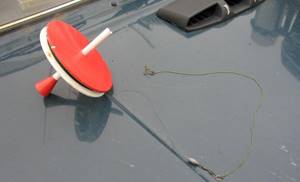
For frog fishing, academic gear for the chosen bait does not require any special modifications. Mugs, girders, rubber donks and zakidukhs are used in equipment options for fish bait.
Important! When hooked, the amphibian behaves quite energetically, so the use of swivels should not be ignored. Otherwise, overlap and tangling of the leash with the main line will reduce the effectiveness of installation to nothing.
A small nuance of installation is the use of single hooks with an elongated shank instead of doubles. As a rule, hooks of 6–8 numbers with a straight sting are suitable for frogs. The color of the accessory does not play a special role; the basis of effectiveness is the strength and sharpness of the hook tip.
Fishing tackle
The easiest gear for frog fishing in late fall or midsummer is a bottom rod. A powerful fishing rod should be equipped with a rigid tip and have a length of 3.5-7 m. A reel with a friction brake should be assembled from high-quality materials.
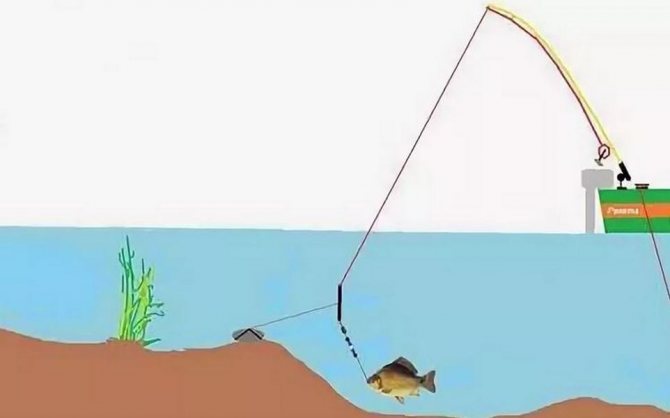
It is desirable that the sinker has a flat shape and weighs at least 100 g. In areas with strong currents, a sinker weighing up to 200 g may be needed. If there is no current in the reservoir, then a spherical or any other shape of weight is suitable. The length of the leash made of strong fishing line will be about 40 cm. You will need a large, strong and sharp hook No. 8-15.
Many anglers prefer to install a metal leader with a double hook. However, its length can be less than 40 cm. The leash is attached to the main fishing line using a carabiner or swivel, which prevents the tackle from getting tangled. But if you use a leash made of fishing line, then its diameter should be at least 0.3 mm, since trophy fish can bite on the amphibian.
To catch catfish, a braided cord with a diameter of at least 0.5 mm is also used. This thread can support fish that weigh 60 kg or more. Pike does not reach such sizes, so you can choose a thinner line for it.
How to set bait
The method of attaching the frog depends on the type of tackle. For rigs that are fed into the fishing zone delicately and without long casting, use a bait attachment on the thigh. This arrangement of the hook gives complete freedom of movement of the live bait and practically does not affect the duration of its activity and survival. The classic rubber donk, mugs and girders are equipped only using this method.
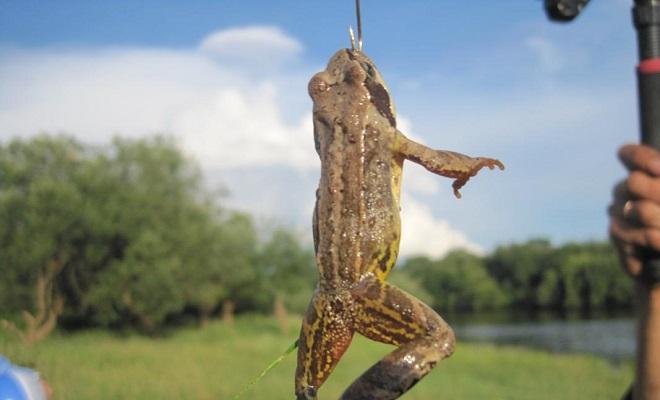
Important! To prevent the attachment from coming off from the hook, place a foam ball on the tip of the accessory as a stopper.
Float fishing rods are equipped by piercing the frog's lower lip and bringing the sting out through its mouth. The specificity of this particular technique in this type of fishing is due to the supply of bait into the fishing zone with legs, which are the most active part of the bait, which often leads to success and quick implementation of the bite already at the initial immersion of the equipment. When fishing with rigs that require casting, the bait is mounted with several single hooks using a multi-lead rig behind the back of the amphibian. They pierce the skin with a hook, pulling its tip out. Double puncture ensures guaranteed safety after the nozzle hits the water. This method is used when fishing with a spinning rod for a frog with wiring and setting up rigs on shore hooks.
How to bait a frog
There are two main ways to bait live bait. Moreover, both of these options do not hinder the natural movements of the amphibian and allow it to maintain its viability for a long time. I would like to immediately draw your attention to the fact that for installing frogs into a rig, a hook with a long shank is required. The simplest and fairly easy way of baiting is considered to be a through puncture of live bait into the thigh of the hind leg. This method does not cause serious damage to live bait and does not hinder its movements.
The second method is inherent to already experienced somyatniks. The technique involves mounting the tree frog behind the skin of the back. This requires caution and skill in baiting, since due to inexperience, damaging the animal’s spine can completely immobilize it, thereby depriving the bait of its attractiveness to a predator. If the fishing strategy involves fishing with a dead bait, the most practical and effective way is to mount the amphibian by piercing the hook through the mouth.
Fishing technique
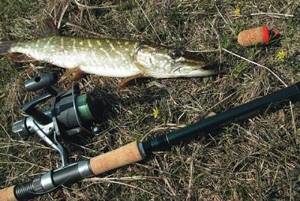
The fishing technique using float rigs is different. In particular, the mounted bait is fed with a fly rod into the window between the vegetation and a bite is waited for in the interval from 2 to 5 minutes. If there are no catfish exits, they move to another point, returning to the fished one after two hours. Having felt the bite, the fisherman pauses and, with the second tightening of the trophy bait, hooks and further fishes out the fish and picks it up in the landing net. When carrying out spinning fishing, frog retrieves can be done according to the stop-and-go principle. With this option, the bite is expected during a pause, when the animal is free swimming and looks to the predator from the most attractive angle. The angler accompanies any jerk with a hook. Spinners also practice uniform retrieving, winding the line with a reel at low speed after a long cast, guiding the equipment along a promising trajectory.
How to catch a frog for catfish bait on a hook quickly and easily?
The question is how to catch this excellent bait for catching catfish without running with a net along the river bank or the edge of a swamp.
The answer is very simple: you need a good flashlight and preferably a partner, in my case it was my son-in-law Andrey.
It happened at the end of July, in the Astrakhan region, near the village of Samosdelka. As soon as it got completely dark, we went to a sand spit on the Old Volga River. The water is warm, the bottom is clear, I walked with a flashlight, knee-deep in water, ahead of Andrey.
He walked a little behind along the shore so as not to frighten the frogs sitting on the sand. There were a lot of frogs in the aquatic vegetation and along the shore. We didn’t expect this, nor did we expect the fact that you can take anything with your hands. I chose the medium-sized ones, gave them to Andrey, and he folded them into a metal fish tank.
Instantly we collected about thirty medium-sized frogs, and the night river kept calling us to move on. There was something attractive, even gambling, about this process. When we caught the first crayfish, then the second, we thought that we would treat ourselves too. But no more crayfish were found.
We didn’t take very large frogs at first, but there were enough of them. It’s strange, but even large catfish, for some reason, prefer medium-sized frogs.
I told my son-in-law that in the early nineties, there was a company in Astrakhan that prepared large frogs for shipment to France.
And we decided to recruit giants for ourselves. Someday you should try what the French frogmen like so much. Andryukha barely dragged the cage with frogs to the house.
That’s the whole secret of successfully, quickly and pleasantly harvesting frogs as bait for catching catfish.
Source: samodelkifish.ru
Fishing with a spinning rod on a frog without hooking
Fishing for pike with a non-hooking frog can be carried out throughout the entire summer and autumn season in reservoirs with a high level of overgrowth. Fishing is carried out in water areas with shallow depths, rarely exceeding a 2-meter level. Pike in such places are accustomed to picking up baits from the surface and readily respond to the bait they like and cause irritation.
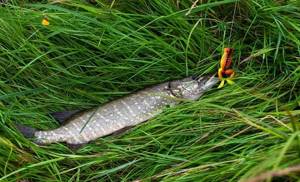
Important! The trajectory of the unhooked hook is chosen taking into account the maximum possible capture of windows among the algae, making pauses and small jerks in such places.
Areas near reed walls also look like promising places for wiring. The trajectory of the bait should be a meter and a half from the wall of the thicket and will be carried out according to the twitching principle. The predator’s approach to the bait is noticeable by the sharp movement of surface plants, which subsequently results in a bright attack from the fish in the form of a surface capture of the bait. The fisherman visually observes the selection of unhooked fish, which adds attractiveness and special surroundings to the fishing method. When fishing, the cord is constantly kept in tension, not allowing the fish to make candles and go into underwater plants for shelter.
Read how to hook and land pike on a spinning rod for a beginner.
Catching catfish with a toad from the shores and from the lake - video lesson
As far as we know, catfish can grow to great sizes, while maintaining a low-impact way of living and being incredibly unpretentious.
His diet includes practically everything he can eat, including carrion. In this case, you can give precedence to the toad , which will not remain a place in your list.
Zmist
- 1 How to catch and where to get a toad?
- 2 Where and how long can you save a toad?
- 3 Catfish fishing techniques
- 4 Vivazhuvannya
How to catch and where to get a toad?
To organize such fishing, you need to stock up on toads, and they are not so easy to catch. But with good skills and advanced technology, there are no special difficulties. Toads are already sore and they can eat literally anything.
Chantly, there are a lot of fishermen familiar with the picture, if the toad was interested in fishing, steadily striving on the float. The axis of this interest of the toad can be vikorized by stagnating the initial trick with the hook. You can put a leaf or blade of grass on the sludge and manipulate it very close to the toad.
Now, in a year you will be able to catch your catch, but for this you will need patience and a winder.
You can get a bunch of toads in this way. Very close to the water there is a hole about a meter deep, and the next day, looking into it, you can see a bunch of toads. The worst thing is that they can’t get out of them and, being on fishing for a few days, they can be taken out of necessity.
Where and how long can you save a toad?
Unfortunately, it is impossible to preserve these amphibians for long; after being exposed to them in an unnatural environment, they become fragile, which, undoubtedly, is due to their attractiveness. Moreover, they can waste their natural influx, which can also contribute to their negative influence on fishing results.
If they plan to save time at home, they need to be prepared until their skin lasts for 2 years with all sorts of mosquitoes, so that they have a good appetite.
You can save a lot of time by using a large plastic bucket by first filling it with 15-20 cm of water, so that they feel more comfortable.
Catfish fishing technique
The toad is very suitable for catching catfish, but is absolutely not suitable for catching other small fish. This is due to the fact that after 40 weeks of exposure to water, there is no sourness. No other fish, other than catfish, would want to tamper with such a bait.
Therefore, classic toad fishing involves constantly pulling the toad out of the water so that it replenishes its water reserves. Then, after 20-25 skins , you will have to check the bottom of the tackle to see if the toad is alive.
It’s not so easy, and no one is going to take up such fishing.
As a rule, when catching catfish on a jigging rod, you fish a toad for it. It is not important to make such tackle yourself, but to buy it in a fishing store. It is formed around the first stick, to which a piece of hair or fishing cord is tied, with a similar hook at the end.
The hair is fixed on the birch tree, and the toad is attached to the hook and thrown towards the shore. As a rule, catfish’s favorite place is tse yami, de vin and grub. Therefore, it is important to leave them, especially at night, when their senses become active.
The hair or motuzka will be mixed in order to catch the big catfish, and you can bite one, in which the tackle will be securely fastened to the birch. When fishing, you tie the tackle to a tree, which guarantees the catch of a great fisherman.
ActionTeaser.ru - teaser advertising
kwok is becoming very popular .” This is a special application that allows you to make sounds (quacks) that make catfish. Moreover, you can catch catfish with the “kwok” both at night and during the day.
With this method of fishing, it is necessary to use mother fish, since it is impossible to fish from the shore with a “kwok”.
The technique for fishing with the “kwok” is simple: to catch the cob, you need to put the toad on the hook. Place it on the hook by the back leg, but not in any other place and lower it into the water.
After this, stastosovuyuchi special pristosuvannya, then start “squatting”. Through the skin 20-25 quills, the toad is pulled out of the water and allowed to dry for 10 quills, after which it can be lowered into the water again. Some toads can get by every day.
For this purpose, toads of medium size are chosen, as they attract catfish the most.
This type of fishing is suitable for catching fish, as toad is a favorite bait for catfish . Having finished your business, the catfish can easily be caught in milkweed. This type of fishing is simple and available with a large quantity of bait floating near us in the waters.
Vivazhuvannya
Particular respect must be given to the fishing of catfish, as the sample may be vagomy. There were episodes when the catfish easily left the place and pulled it, as if in tow. Let’s not forget that you can easily catch a fisherman in the water if you take the tackle incorrectly. When catching catfish, it is not recommended to wrap hair or cord around your hand.
Catfish is a very strong fish and there were attacks when fishermen paid their lives, ignoring the capabilities of this fish. In such outbursts, a great sack or a hook is to blame. In extreme cases, a catfish can be stunned with an oar when its head appears above the surface.
But in such outbursts everything lasts for seconds, so you can’t lack safety equipment.
You need to learn with your own eyes how a toad works when catching catfish and how you can put the result in your bag by watching the video below.
There is no doubt that fishing plays a role in people’s lives, and it will not stop in their place to recognize that everyday life is a source of stress. People spend more and more money on nature in order to lose themselves in the face of everyday reality.
Some fishermen go fishing for the sake of the catch, while others do it for the sake of satisfaction. The words of fishermen are heard more and more often: “When you catch it, let it go.” Particularly, there is a price for fried fish that come across on the gullies.
At the same time, it is very important to remember that there are 3 millennia in the yard and to catch fish, vikoryst and inhumane fishing methods will lose their guilt in the past.
In Europe, vicious live bait in bait bait has long been banned, which means that this type of fishing amounts to inhumane fishing. The same can be said about catching catfish with a toad. Why is it necessary to worry about an unfortunate toad in order to make the catfish evil?
Of course, it’s on the right side of the skin, but you still want to keep up with the times, and talk about those who need to protect nature and carefully put it to the toads themselves. At the same time, there is a wealth of technology and gear available that allows us not to resort to such inhumane methods for catching catfish and other types of fish.
ActionTeaser.ru - teaser advertising
Source: https://poradum.com/poradi-dlya-domu/lovlya-soma-na-zhabu-z-berega-iz-chovna-video-urok.html
Gear selection
For gear, spinning rods are selected in the average test range from 15 to 40 grams, using a semi-fast action, which allows you to actively animate the bait. Carbon fiber spinning rods of 2.5-3 meters are considered the best options for fishing with poppers, which is the hook-free rod presented above. When hunting from a boat, the length of the gear is reduced to 2 - 2.3 meters. The reel on the spinning rod is of the inertialess type with a high gear ratio and a spool for a capacity of 100 meters of braid.
A fine-tuning clutch will help you correctly work out bites and cope with hooks that cannot be ruled out even when fishing without hooks. A braided version of 0.2 mm fishing line is used as the main cord. Fishing for a frog in the fall is characterized by frequent bites of trophy specimens and the safety margin of a fishing line of this diameter is quite enough to fight a five-kilogram trophy. It is better to use soft leashes made of Kevlar; steel and tungsten options significantly hinder high-quality animation. The accessory length of 20 cm is enough even for very large pike.
Making bait from a spoon
Fishermen construct such gear from a variety of materials, but a frog made from 2 plastic spoons is especially popular. The main advantages of such a bait are that it is very easy to construct, in addition, the necessary materials can be found in almost every apartment.
For production you will need:
- 2 new plastic spoons;
- a small piece of lead (about 15 grams);
- colored rubber bands for money;
- steel wire;
- dry sawdust.
Algorithm of actions:
- The cuttings are cut from plastic spoons using a stationery knife (it is important that the blade itself is not damaged or cracked).
- Next, small cuts are made along the length of the bases of the spoons; they should be in the middle. A thin wire will be inserted into these recesses, neatly twisted at both ends (a hook and fishing line will be attached to the ends).
- A small piece of lead weighing 12-15 grams is attached to one blade of the spoons with glue.
- Cuts are made on two sides of one of the bases, to which elastic bands imitating frog legs are attached.
- Next, the base of the spoon is covered with sawdust mixed with glue. When the blade is completely filled, a twisted wire is inserted into it. Then sawdust and glue are poured into the second base.
- The two parts of the spoon are connected using Superglue. It is necessary to try to make the bait airtight, otherwise it will not last long.
- Finally, the frog is painted with nail polish. The closer to natural the color is, the better.
Before using this bait, you must wait for the glue to dry completely.
Catching catfish on a donk - photo and video guide
Every fisherman dreams of catching a very big fish. And today, in our rivers and reservoirs, the largest representative of the ichthyofauna is the catfish.
You can catch catfish with a donk, which can also be used to catch large live bait, which can later become bait for large catfish.
Catching catfish with a donk has an undeniable advantage over other methods of catching catfish. The number of bottoms can be large, so you can fish a fairly large area and find out especially promising places where catfish live.
Catching catfish on a donk in spring and summer is almost identical, try different baits. Use a bunch of worms more often in the spring.
Authorship of the design diagram for bottom gear with a float https://www.euro-som.de/.
Donka for catfish can be either with or without a rod.
Choose a strong rod with a powerful blank, since sometimes you have to resort to forced fishing. For catching catfish on a donk, special carp or sea rods are suitable. The same goes for coils.
Powerful inertia-free models of size 4000 with a large spool are best suited for equipping a donkey.
The thickness of the fishing line depends on the intended trophy. It can be braided or monofilament, the main thing is that the breaking force is greater than the weight of the catfish. Many anglers use 1 mm fishing line for bottom fishing without a rod.
The weight of the sinker depends on the strength of the current and the depth of fishing. If on a reservoir with standing water 20-50 g is enough, then for a large river - 100-200 g.
Hooks are selected to match the bait; they must be large and strong.
Professionals talk about how to catch catfish on a donk, what the equipment looks like and why it has a float in the following video.
Catfish are omnivorous fish, but their diet changes with age.
For small catfish, the best baits are:
- leeches;
- crawls;
- shells.
Larger individuals feed on:
- frogs;
- small fish;
- crayfish.
Giant catfish eat:
- mice;
- large fish;
- waterfowl;
- small animals.
In addition, the fisherman should take into account that the catfish performs the function of an orderly for reservoirs and rivers. He does not disdain food with a “flavor”, and, having a good sense of smell, senses such food from a great distance. That’s why experienced bait fishermen deliberately spoil baits so that they have a rotten smell.
Fishing for crayfish
When studying the stomach contents of caught catfish, fishermen often find crayfish shells. This suggests that such bait will be a real delicacy for the fish.
The most difficult part of fishing with this bait will be finding the crayfish. Some fishing stores sell crayfish, and if you can’t buy it, you have to catch bait with claws using crayfish traps.
You can adapt a regular lift for catching fry by tying an appetizing bait, for example, a frog roasted over a fire, in the center of the net.
Fishing with a frog
Frog is one of the most popular baits for catfish. They hook it by the hind legs with the sting up.
To prevent the bait from being too active, you can use a double hook, placing the frog on both legs. Then she will only crawl along the bottom. The easiest way to catch frogs is in the evening, when it gets dark, and to ensure that the jumping frog does not offer resistance, use the following proven method:
Having found a frog, you need to point a flashlight beam at it, after which you can pick up the frog with your hand. You can use a landing net to catch frogs.
Fishing with a worm
It is best to start catching catfish with a donkey with such a simple bait as a worm. To do this, a bunch of any worms or crawlers is strung on a large hook with a long shank.
Of course, it is unlikely that you will be able to catch a trophy fish, but you will be able to get acquainted with the habits of catfish. The donk can be equipped with two hooks, and a feeder can be mounted to attract fish.
The bait will be a mixture of earth and chopped worms. Often the by-catch includes fish such as ide, bream, and perch.
Fishing with live bait
Since catfish is a predatory fish, it can also be caught using live bait. Fish of different sizes fall prey to catfish. Fishing with live bait is carried out at night; there are usually bites on half of the installed bottom gear.
Any fish caught during the day is suitable as live bait. You can bait a fish on a hook by the lip or the back.
Finding a place to catch catfish
It is necessary to catch catfish on a donk in deep holes. You can find them on sharp bends of the river by making several test casts. Having a boat with an echo sounder will make finding a fishing spot much easier. Another way to find a catfish den is to tactfully ask local fishermen.
The area adjacent to the pit is also promising for fishing. Usually catfish hunt at the same points. So, having figured out where the fish are coming out in one night, you can safely go fishing here next time. Some of the donks should be placed under trees, near reeds and water lilies.
Features of catching catfish from the shore
When bottom fishing from the shore, you should adhere to the following tactics. First, the most promising places for fishing are selected. The fisherman spends most of his time in such places.
The rod must be securely installed on stands, the reel clutch must be loosened. The tip of the rod, which is equipped with a firefly or bell, acts as a bite alarm.
Be sure to provide an area for landing large fish before dark.
In local places you can use donks without rods. It is only important to securely fasten the fishing line to a suitable support (bush, tree).
Catching catfish with bottom tackle from a boat has its pros and cons.
The advantages include being close to the fishing point, accurately delivering the bait, and using short tackle with a thinner line.
The disadvantage of fishing is the awkward position of the fisherman, the restrictions when fishing at night, and the difficulty of landing trophy fish. Going out to catch catfish on a rubber boat alone is very risky. If you take a large catfish, then the riding experience will not be the most pleasant.
Source: https://ranoutrom.com/sposoby-lovli/som/donka.html
